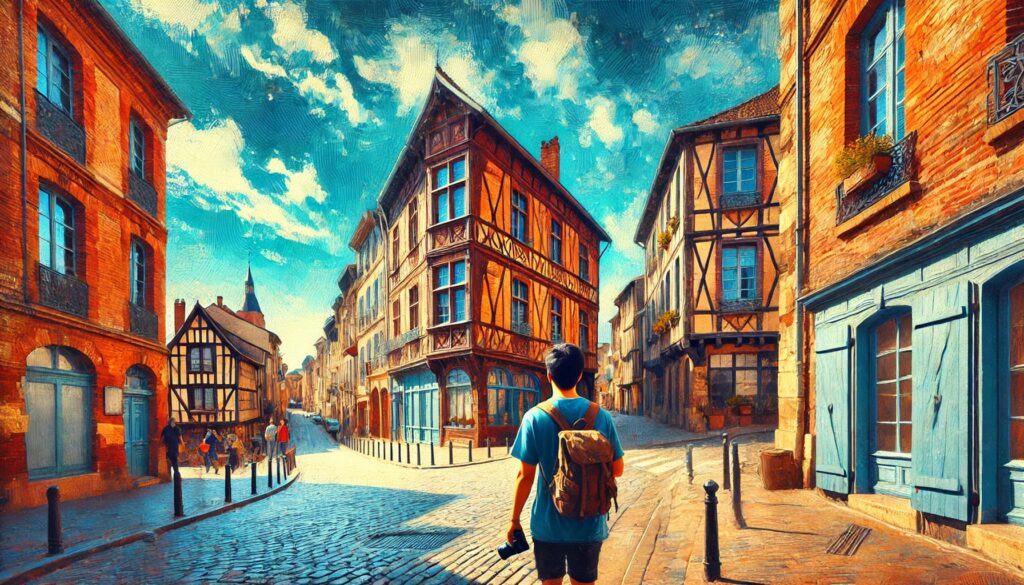ChatGPT:Albi is a picturesque town located in the Tarn department in southern France. Known for its stunning medieval architecture, the town is a UNESCO World Heritage site. The centerpiece of Albi is the magnificent Sainte-Cécile Cathedral, the largest brick building in the world, characterized by its Gothic style and intricate interior frescoes. Nearby, the Berbie Palace, a former bishop’s residence, now houses the Toulouse-Lautrec Museum, which showcases the works of the famous painter who was born in Albi. The town is set along the Tarn River, offering beautiful views and a charming, historic atmosphere with narrow streets, half-timbered houses, and vibrant local markets. Albi is also noted for its cultural festivals and a warm, Mediterranean climate.
Albi’s origins trace back to antiquity, with evidence of human settlement in the region dating to prehistoric times. Its strategic location along the Tarn River made it an attractive site for early inhabitants. During the Roman era, Albi, then known as Albiga, became an important settlement.
In the Middle Ages, Albi rose to prominence, particularly in the 10th century when it became the seat of a powerful bishopric. The construction of the Sainte-Cécile Cathedral began in 1282 as a response to the Albigensian Crusade against the Cathars, a religious group deemed heretical by the Catholic Church. The cathedral’s construction, primarily completed by the 15th century, symbolizes the triumph of the Catholic Church over the Cathars and showcases an austere exterior with a richly decorated interior.
Albi’s history is also marked by its involvement in the Cathar movement in the 12th and 13th centuries. The town became a center for Catharism, a Christian dualist movement considered heretical by the Catholic Church. The Albigensian Crusade (1209–1229) was launched to eliminate the Cathars, leading to significant military and social upheaval in the region.
The 13th century saw the establishment of the Berbie Palace, which served as the bishop’s residence and a stronghold against the Cathars. The palace, along with the cathedral, forms a significant part of Albi’s architectural heritage.
During the Renaissance, Albi benefited from the growth of trade and commerce. The town’s economy flourished, leading to the construction of many fine houses and public buildings. Albi’s local industries, including textiles and pottery, contributed to its economic prosperity.
In the 19th and 20th centuries, Albi experienced further development, modernizing its infrastructure while preserving its historical character. The town became a cultural center, attracting artists and intellectuals. The establishment of the Toulouse-Lautrec Museum in the Berbie Palace further cemented Albi’s reputation as a cultural hub.
Today, Albi is celebrated for its well-preserved medieval architecture, its rich history, and its cultural heritage. The town’s inclusion as a UNESCO World Heritage site in 2010 highlights its significance as a historical and cultural landmark in France.
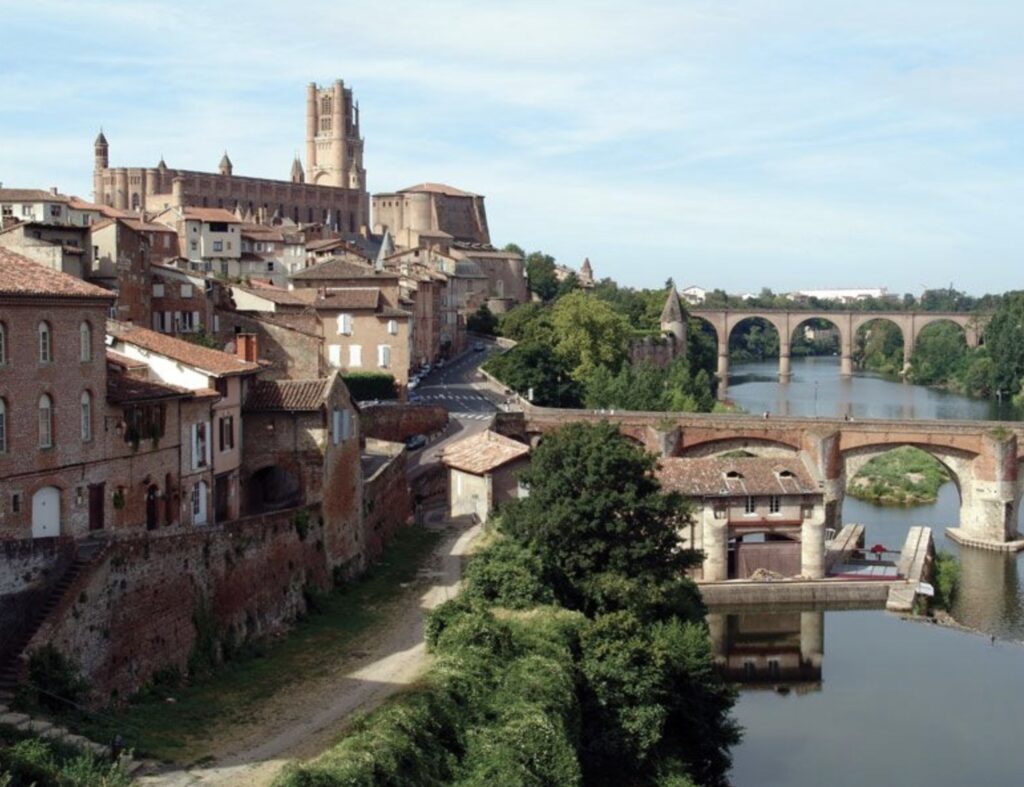
The Sainte-Cécile Cathedral in Albi, France, is an architectural masterpiece and one of the most striking examples of southern Gothic architecture. Its construction began in 1282 and was primarily completed by 1480. Here are the key aspects of its construction and special characteristics:
Construction
Materials: The cathedral is built primarily of brick, which is unusual for Gothic cathedrals that typically use stone. The use of brick gives the cathedral its distinctive red hue and contributes to its massive, fortress-like appearance.
Design: The cathedral was designed to convey the power and authority of the Catholic Church, particularly in response to the Cathar heresy prevalent in the region. Its austere exterior and fortified appearance reflect this intention.
Timeline: Construction spanned nearly 200 years, reflecting changes in architectural styles and techniques over time. The initial phase focused on the nave and the exterior fortifications, while later phases added the ornate interior decorations and the bell tower.
Special Characteristics
Exterior:
Fortress-like Appearance: The cathedral has thick walls, narrow windows, and a lack of external ornamentation, giving it a defensive, fortress-like look.
Bell Tower: The 78-meter-high bell tower is a prominent feature and serves as a landmark in the Albi skyline.
Interior:
Frescoes: The interior is richly decorated with one of the largest collections of Italian Renaissance frescoes in France. The frescoes cover the vaulted ceiling, depicting scenes from the Last Judgment and other biblical narratives.
Choir Screen: The intricate choir screen, made of stone and lace-like in its detail, separates the nave from the choir and is considered a masterpiece of Gothic sculpture.
Painted Decorations: The walls and ceilings are adorned with elaborate painted decorations, including patterns, biblical scenes, and depictions of saints.
Great Organ: The cathedral houses a grand organ, built in the 18th century, renowned for its exceptional acoustics and ornate case.
Dimensions: The nave is vast, measuring 18 meters in width and 30 meters in height, creating a sense of awe-inspiring space. The cathedral itself is 113 meters long, making it one of the largest brick buildings in the world.
Symbolism
Religious Significance: The cathedral was intended as a symbol of the Catholic Church’s dominance and as a response to the Albigensian Crusade. Its construction was both a spiritual and political statement, designed to reinforce the authority of the Church in the region.
Overall, the Sainte-Cécile Cathedral in Albi stands out for its imposing architecture, rich interior decoration, and historical significance, making it a unique and important landmark in the history of Gothic architecture.
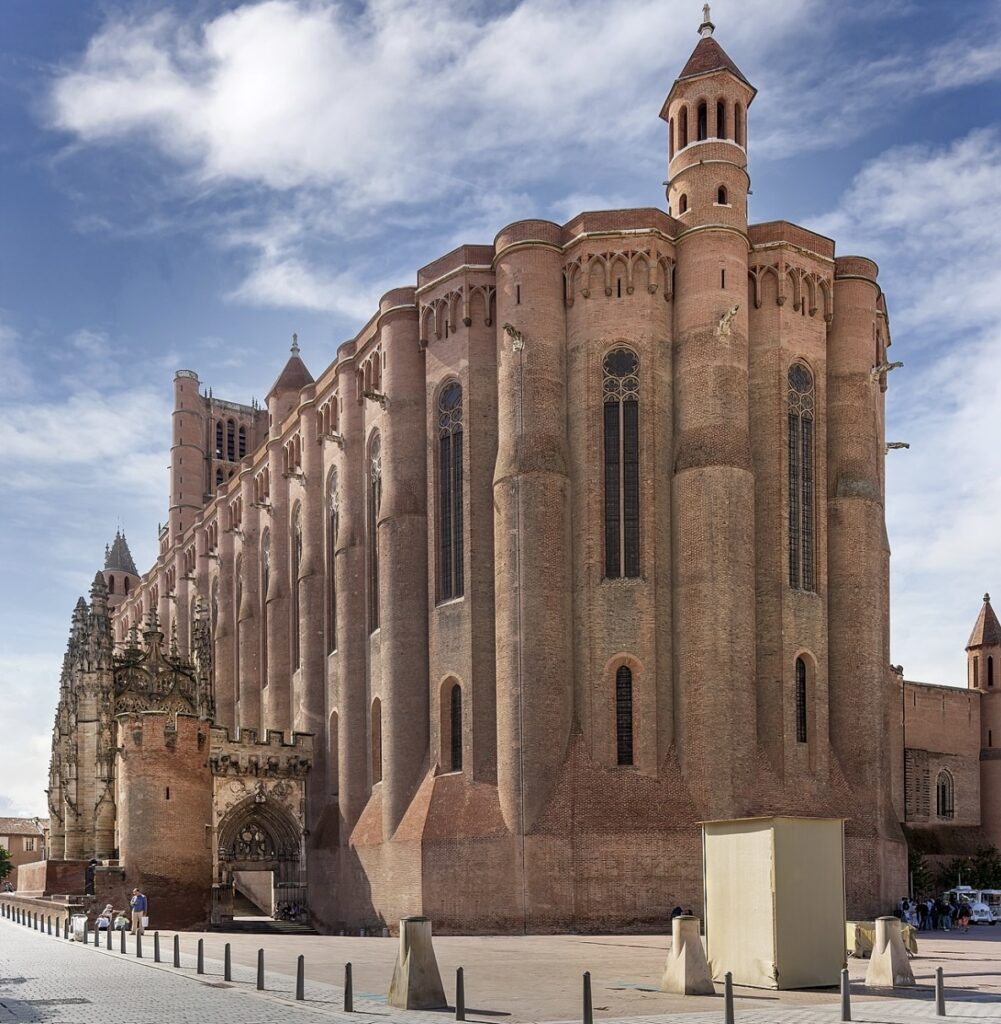
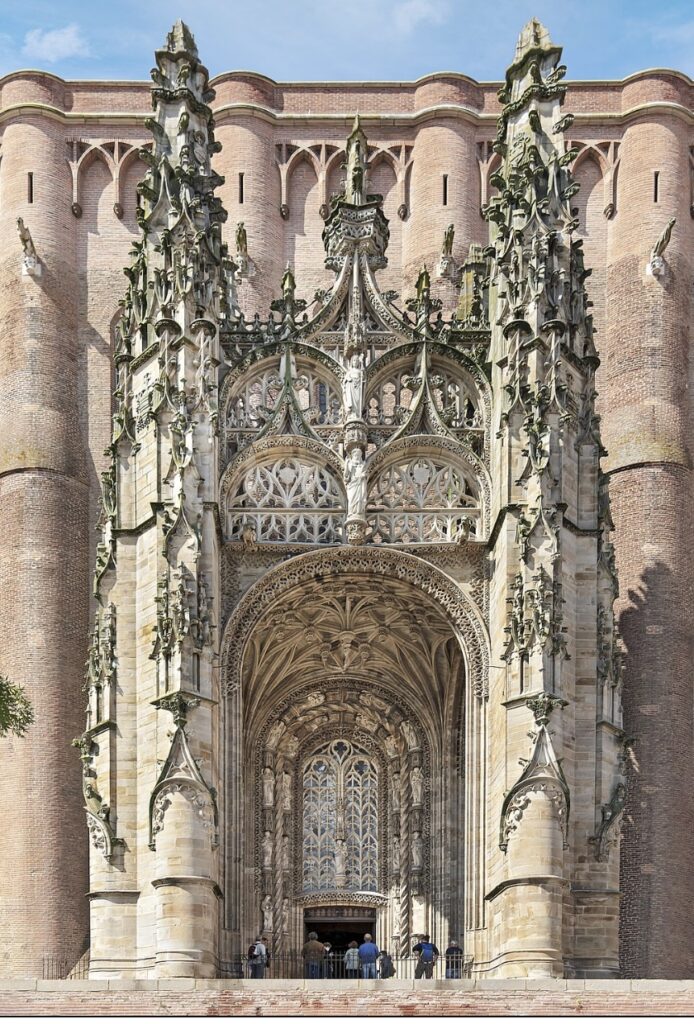
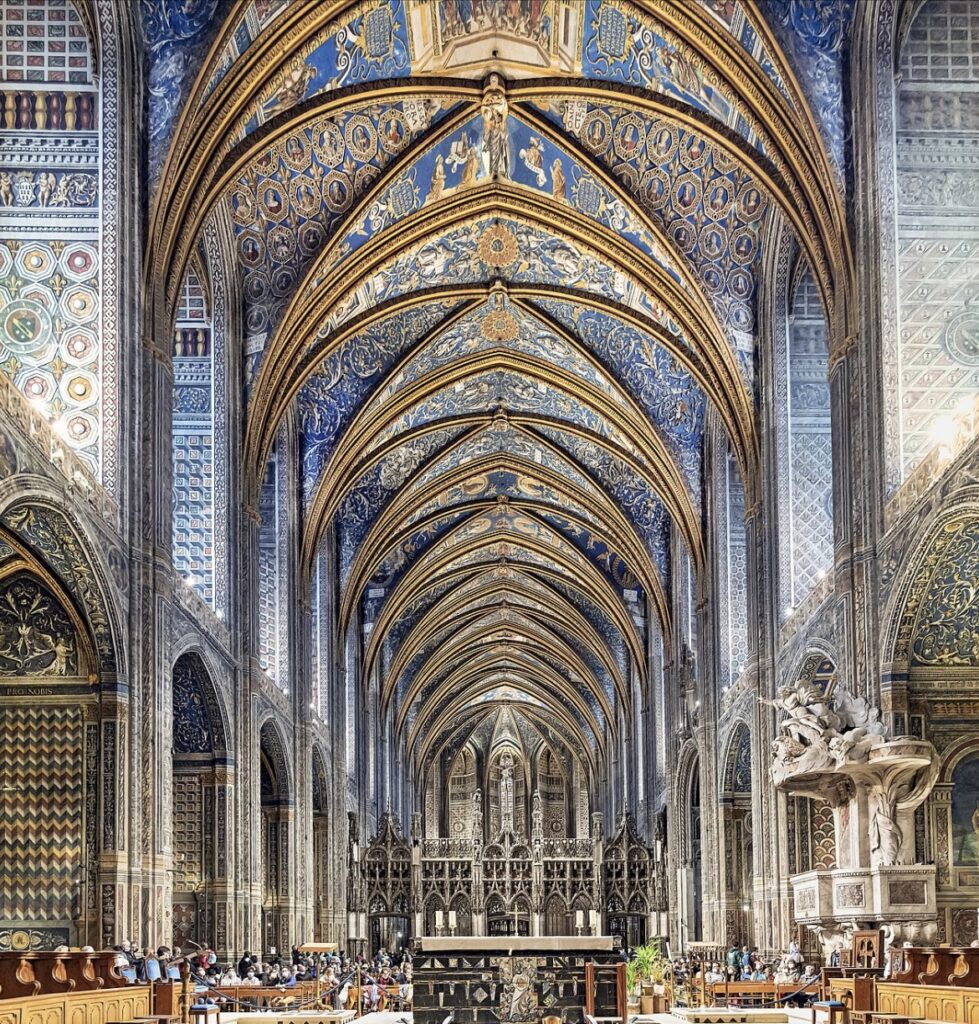
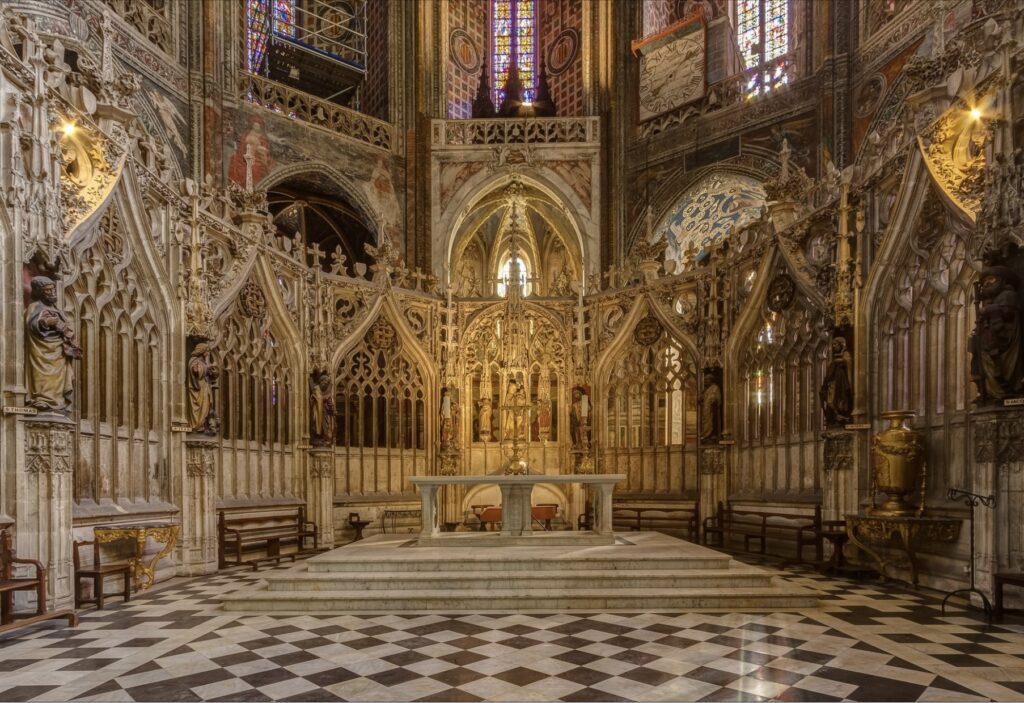
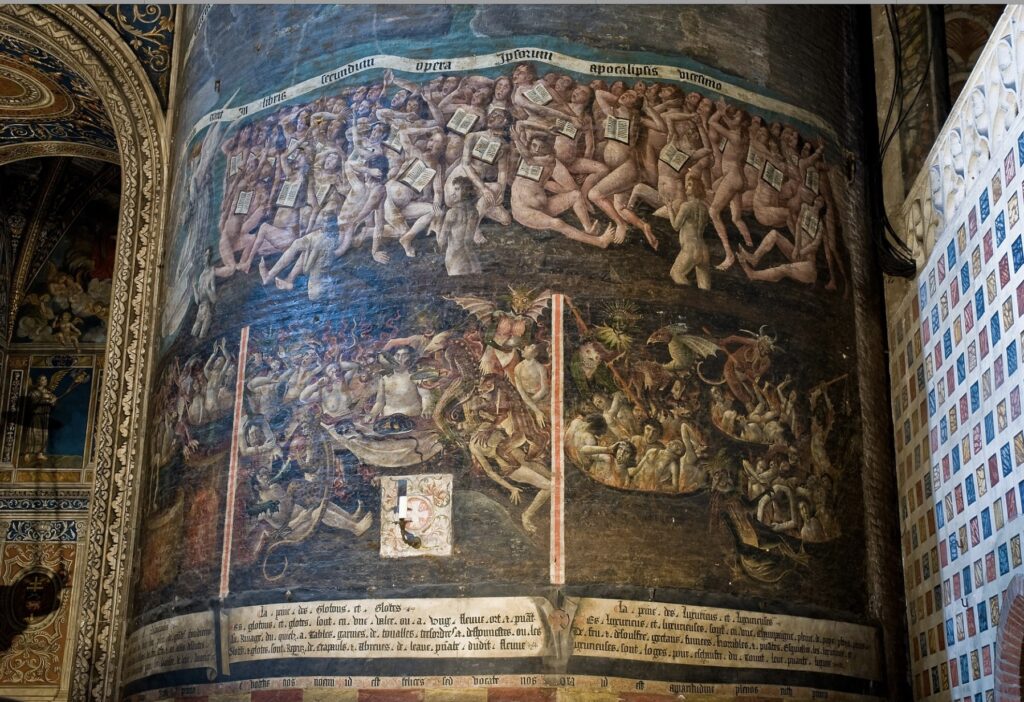
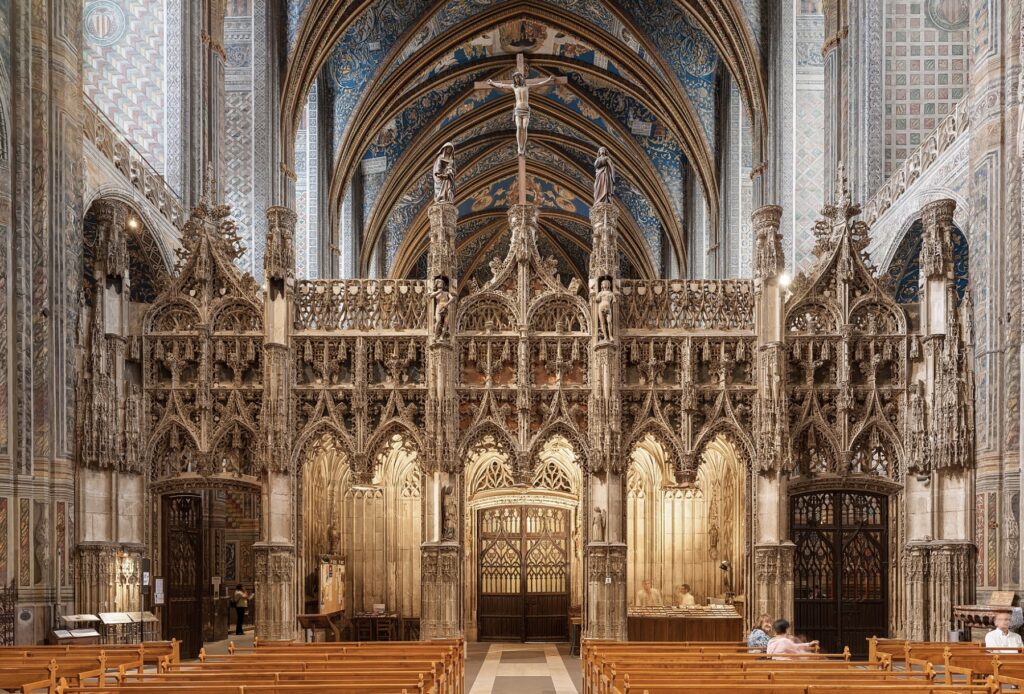
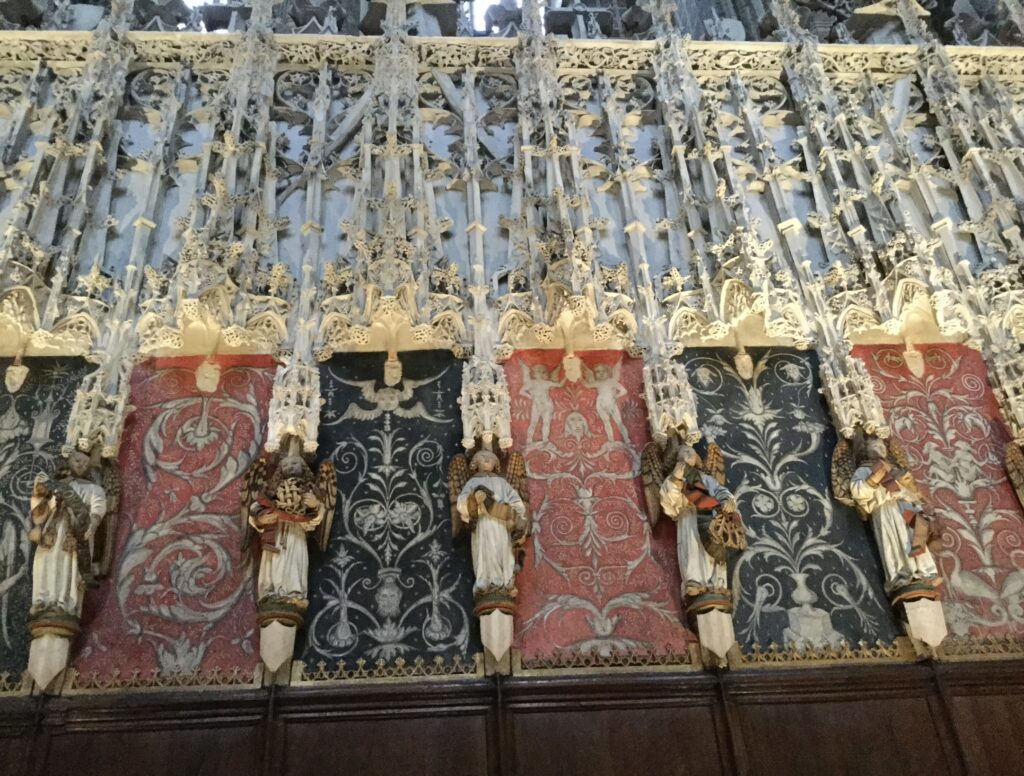
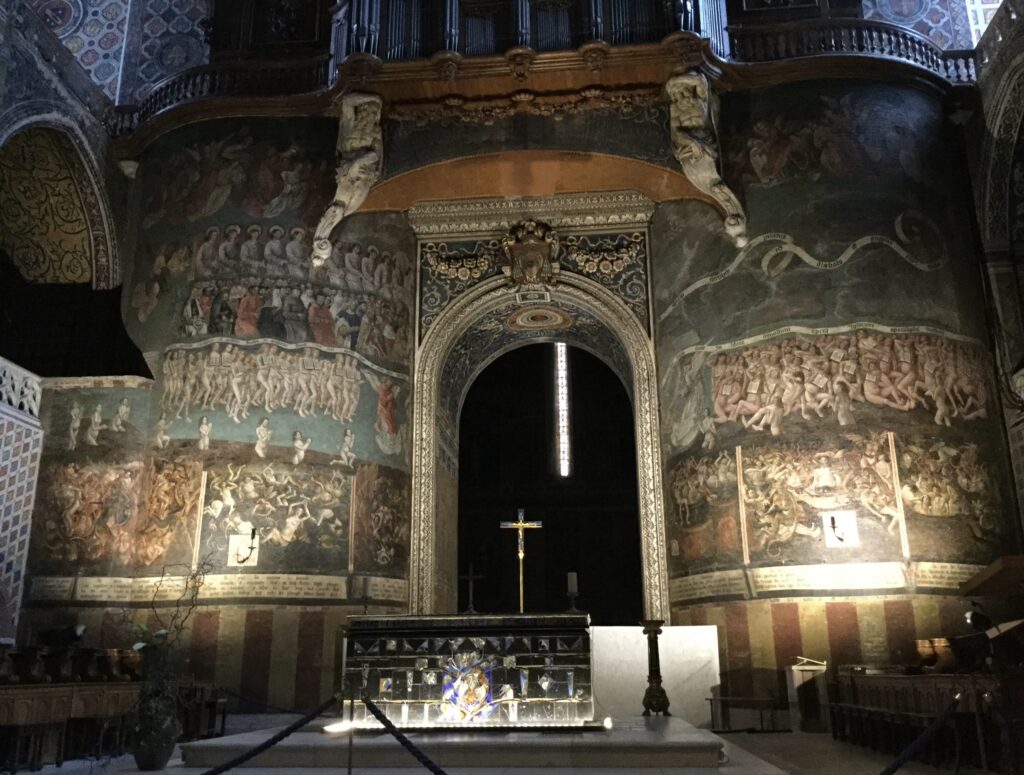
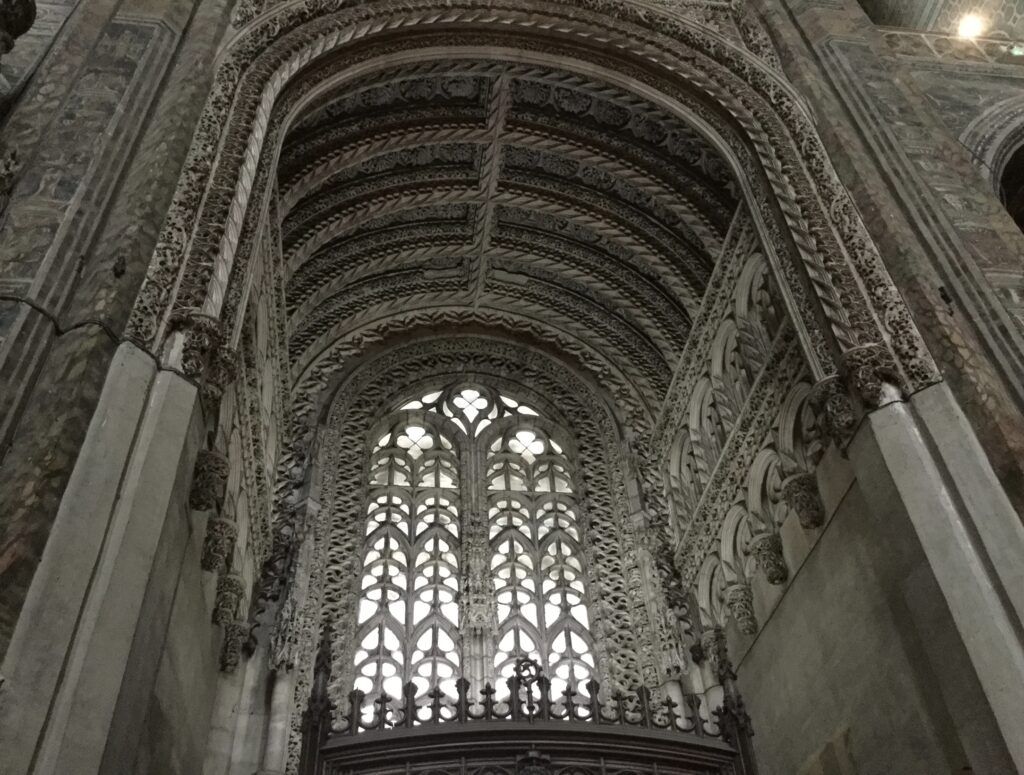
Albi is home to several historical monuments and tourist attractions that draw visitors for their architectural beauty, cultural significance, and historical value. Here are some of the key sites:
Historical Monuments
- Sainte-Cécile Cathedral: The largest brick cathedral in the world, known for its fortress-like exterior and richly decorated interior with Renaissance frescoes and a magnificent choir screen.
- Palais de la Berbie: A former bishop’s palace that now houses the Toulouse-Lautrec Museum, featuring the world’s largest collection of works by the artist.
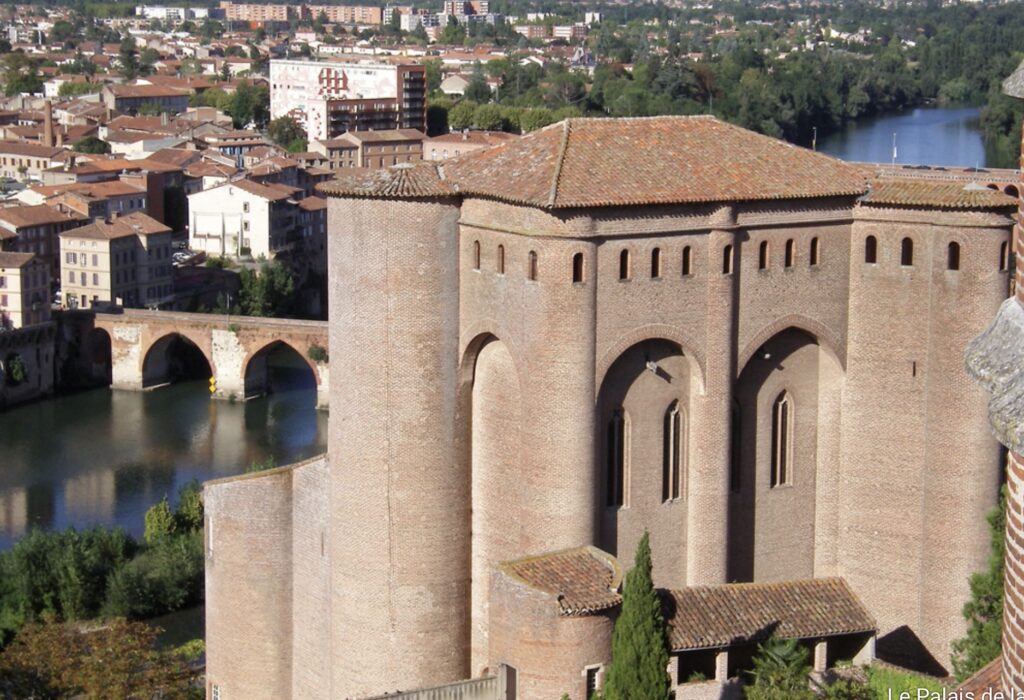
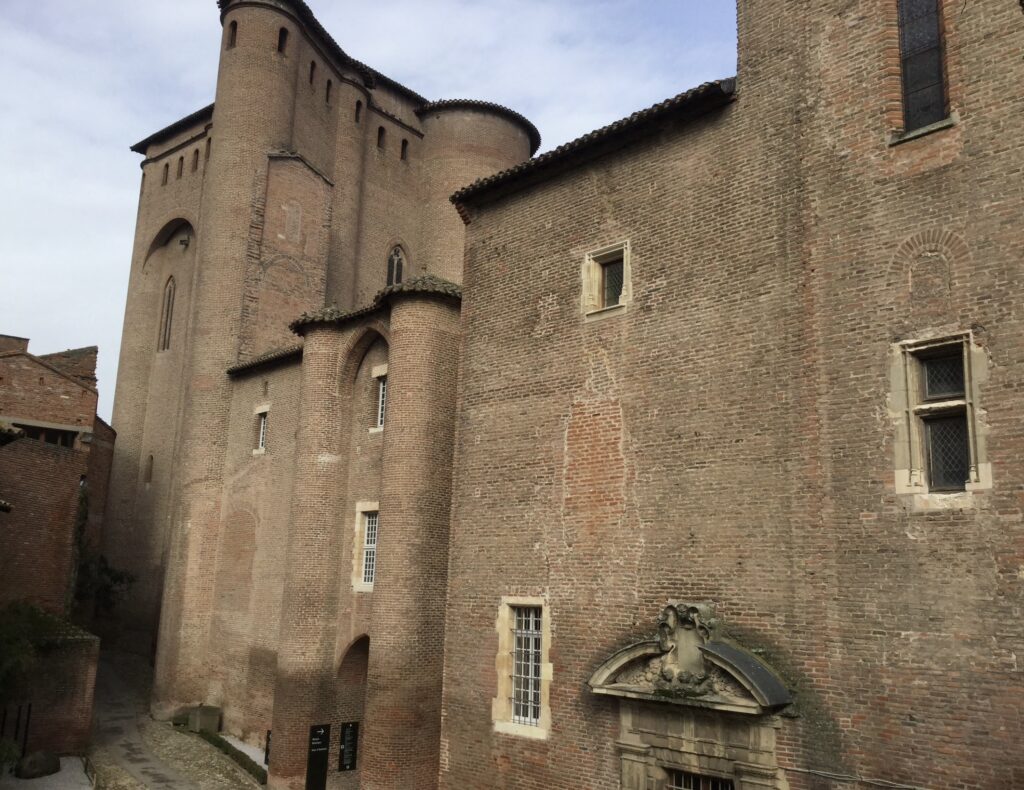
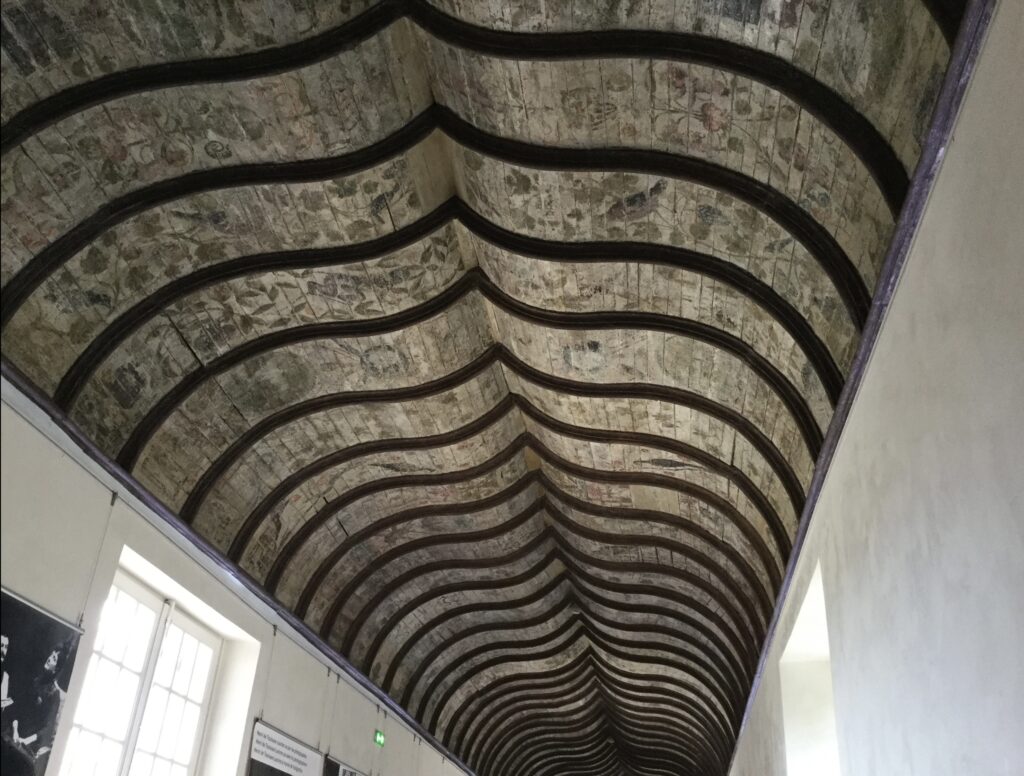
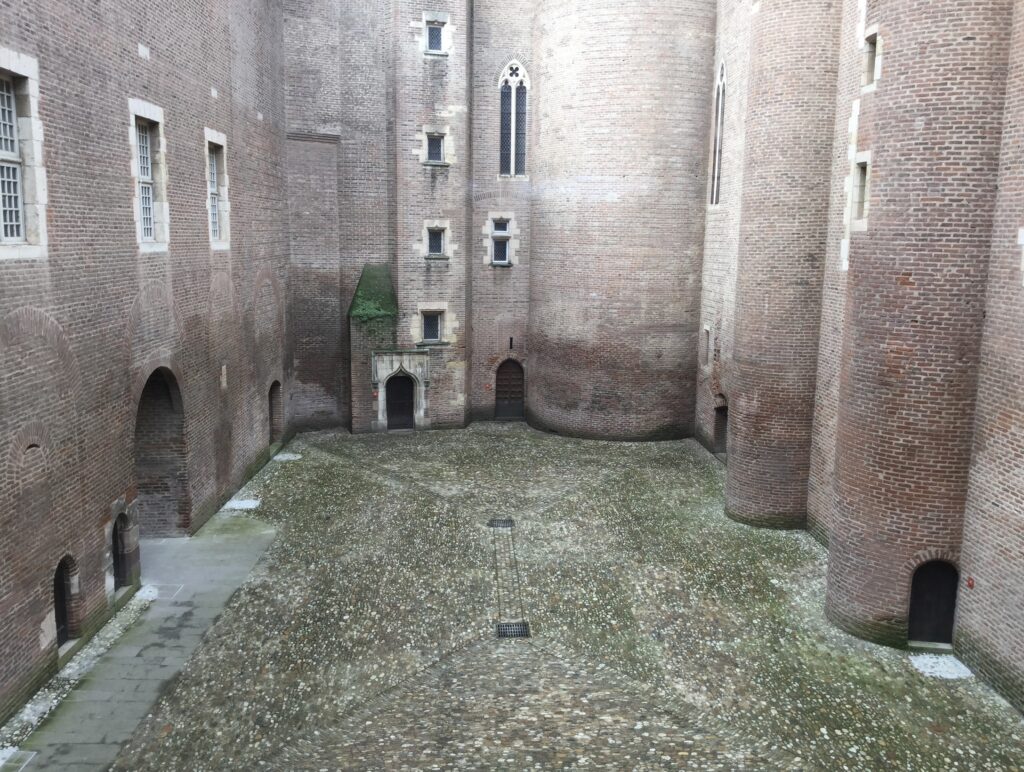
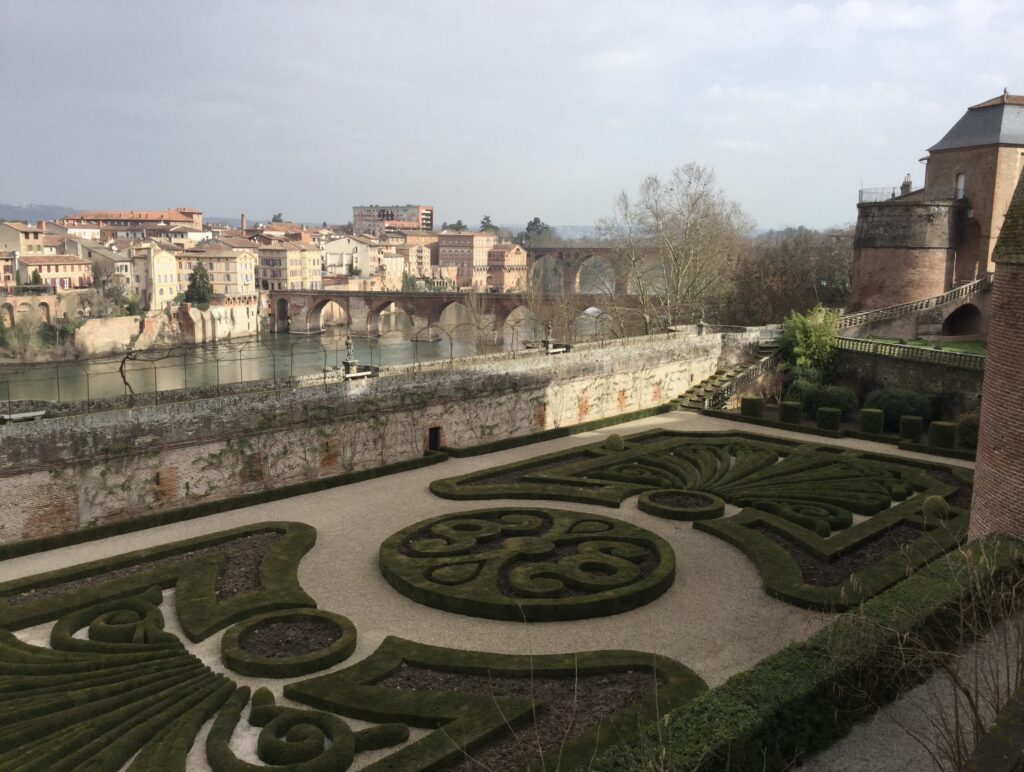
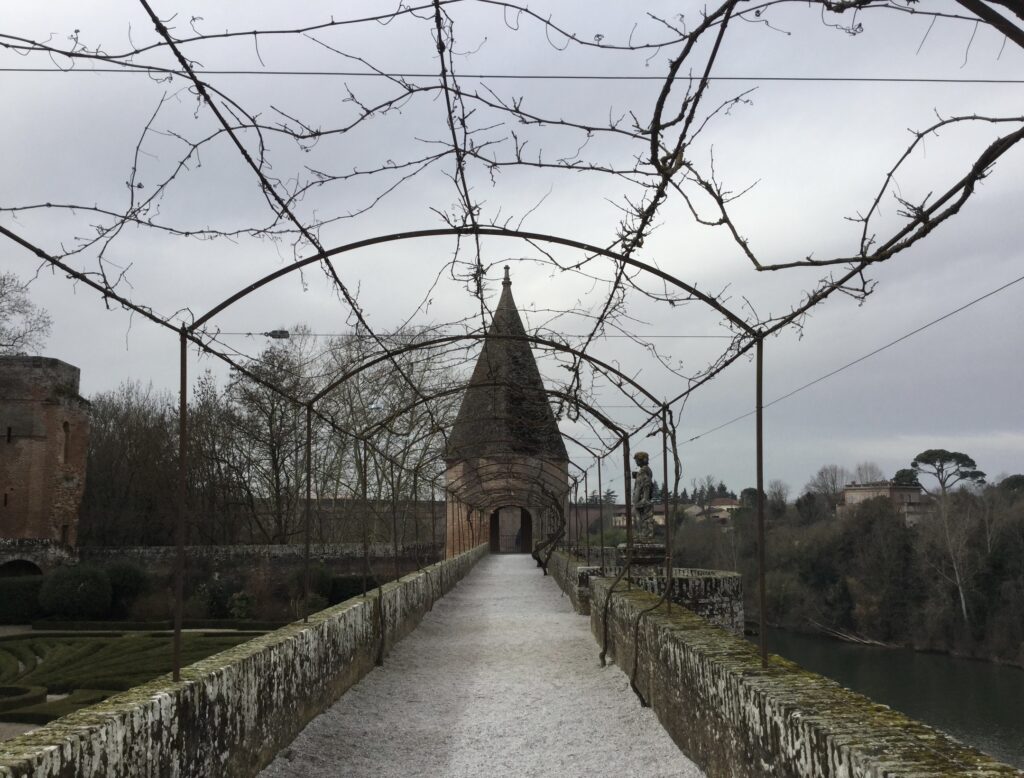
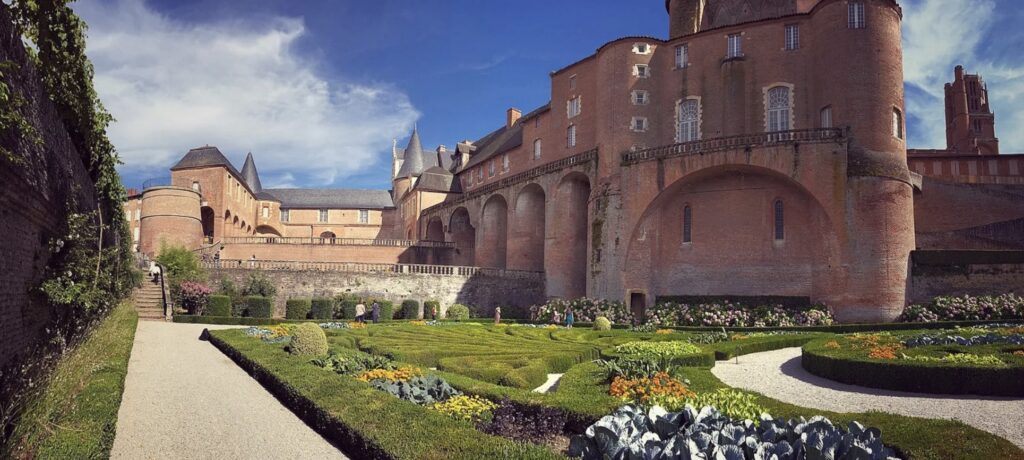
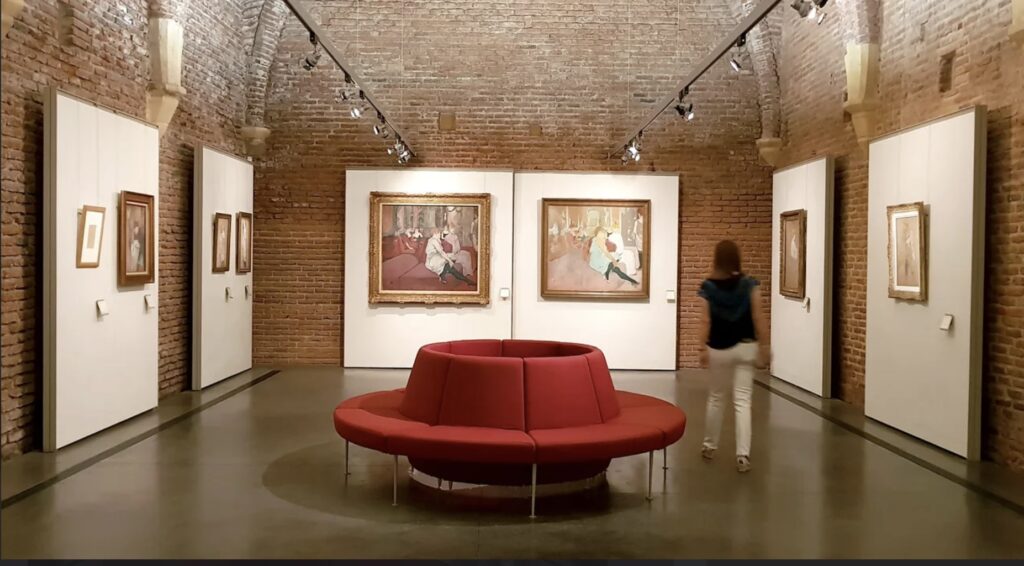
- Pont Vieux (Old Bridge): A medieval bridge dating back to the 11th century, providing picturesque views of the Tarn River and the city.
- Saint-Salvi Church and Cloister: One of the oldest buildings in Albi, blending Romanesque and Gothic architectural styles, with a serene cloister.
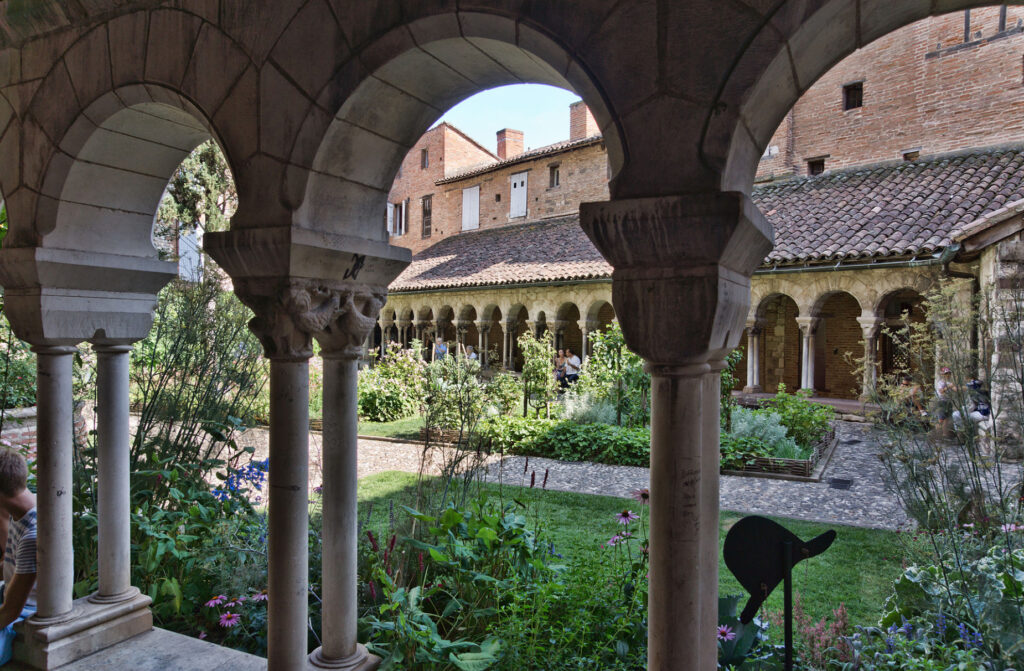
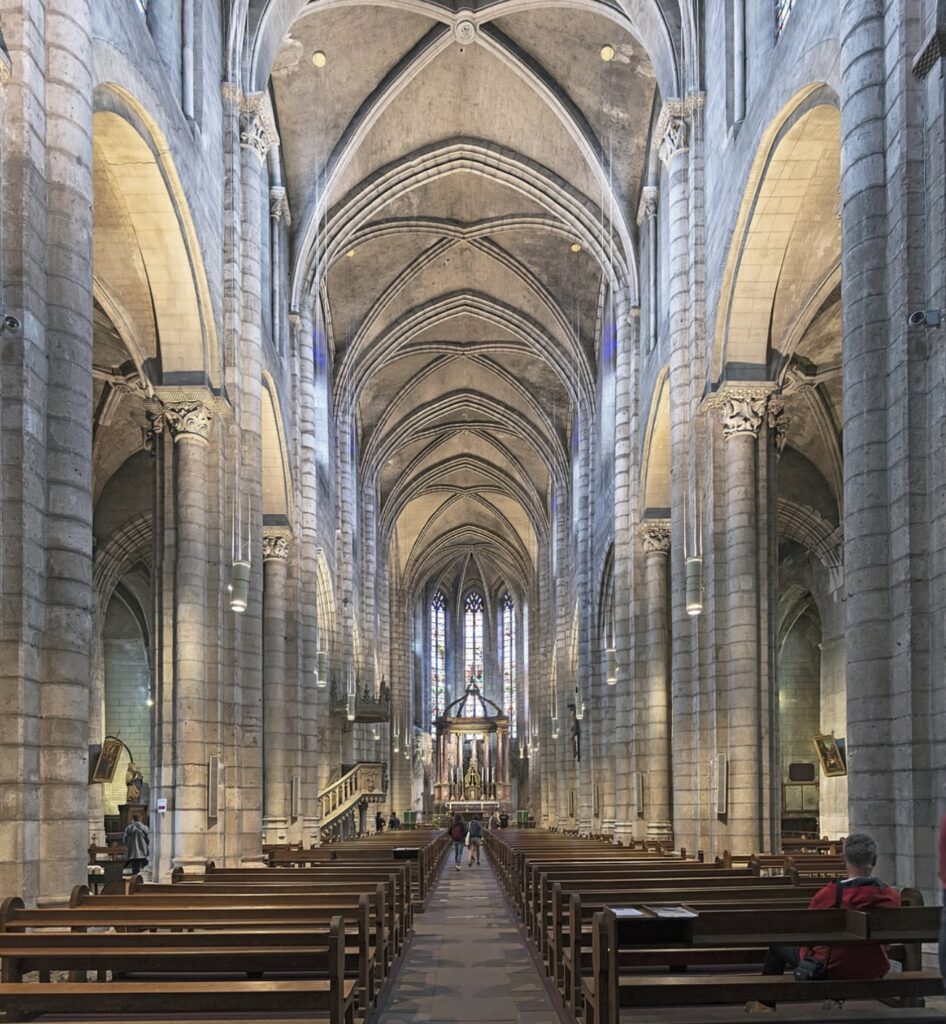
- Maison du Vieil Alby: A well-preserved medieval house that showcases traditional Albi architecture, now a museum dedicated to local history.
Tourist Attractions
- Toulouse-Lautrec Museum: Located in the Palais de la Berbie, this museum offers an extensive collection of paintings, drawings, posters, and lithographs by Henri de Toulouse-Lautrec.
- Albi’s Old Town: A charming area with narrow, winding streets, half-timbered houses, and vibrant local shops and cafes.
- Lapérouse Museum: Dedicated to the explorer Jean-François de Galaup, comte de Lapérouse, who was born near Albi. The museum explores his voyages and discoveries.
- Les Jardins de la Berbie: Beautifully landscaped gardens adjacent to the Palais de la Berbie, offering stunning views over the Tarn River and the old town.
- Circuit du Patrimoine: A heritage trail that guides visitors through the key historical sites and monuments of Albi, providing insights into the city’s rich history and culture.
- Musée de la Mode: A museum showcasing fashion and costume designs from various periods, located in a historic building in the heart of Albi.
- Canoe and Kayak on the Tarn River: An opportunity for visitors to explore Albi from a different perspective, enjoying the natural beauty of the river and its surroundings.
- Market Hall: The covered market, built in the 19th century, is a lively spot where visitors can experience local produce, specialties, and the vibrant atmosphere of Albi’s daily life.
These monuments and attractions make Albi a fascinating destination for history enthusiasts, art lovers, and tourists looking to explore the cultural heritage of southern France.
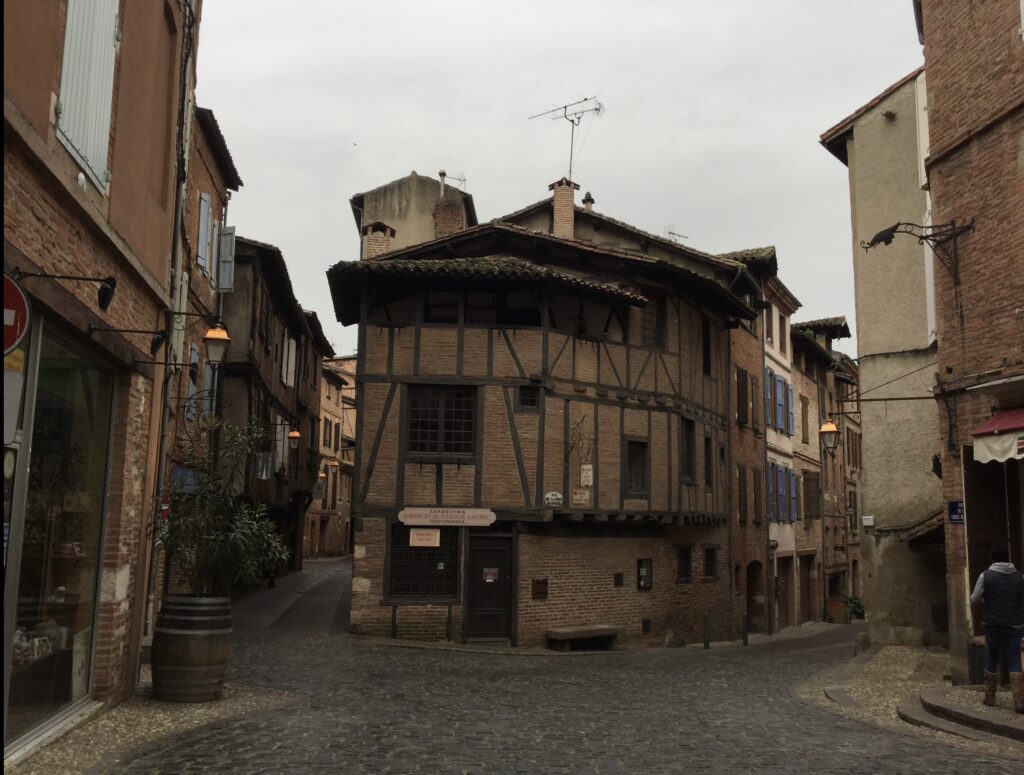

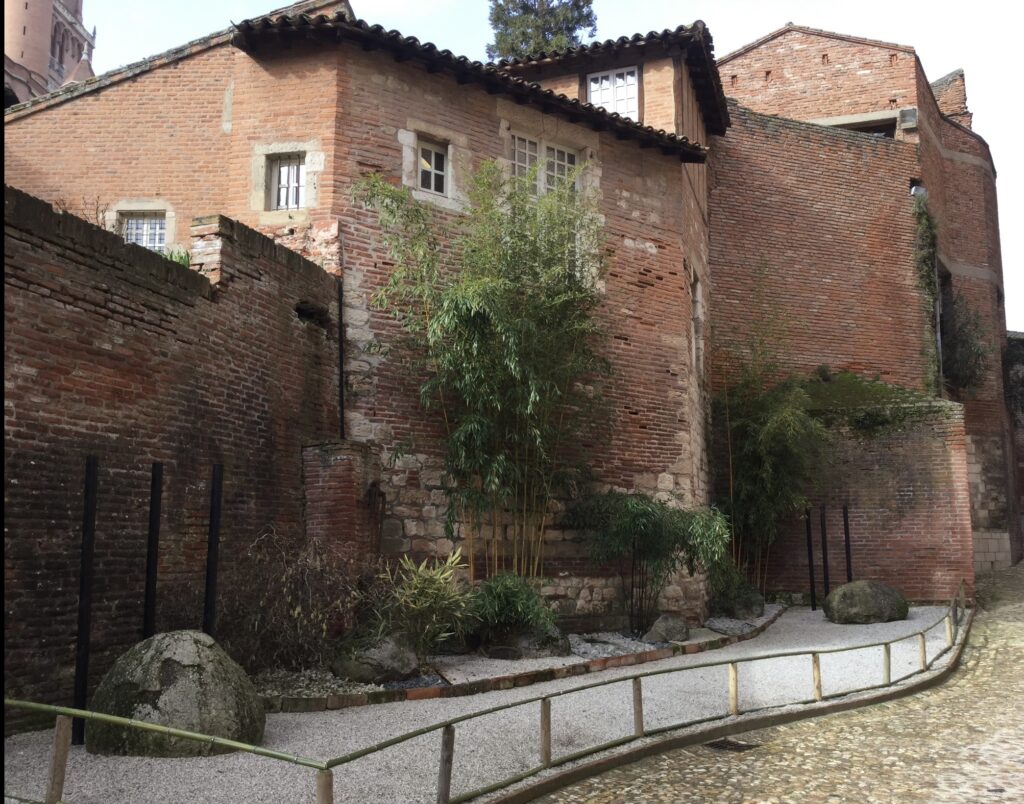
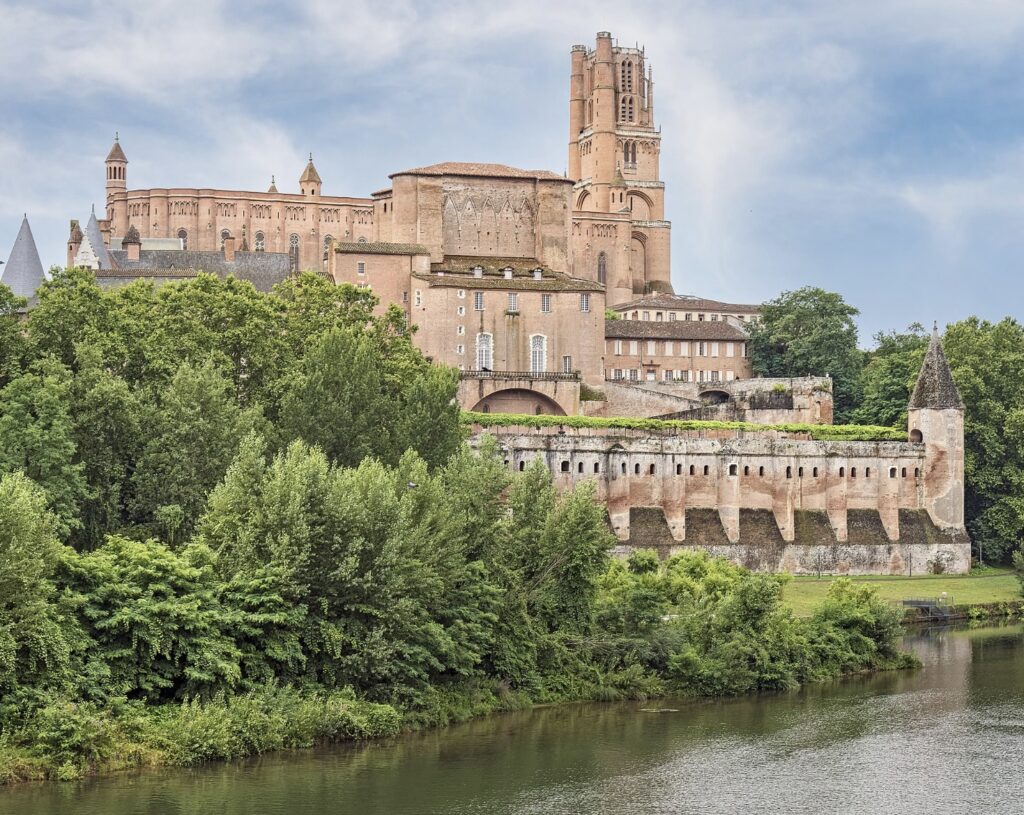
Here’s a suggested one-day walking itinerary in Albi that covers key historical sites and allows you to sample local food specialties:
Morning
- Sainte-Cécile Cathedral
- 8:30 AM: Start your day with a visit to the stunning Sainte-Cécile Cathedral. Take your time exploring the interior, admiring the frescoes, the choir screen, and the overall architecture.
- Palais de la Berbie and Toulouse-Lautrec Museum
- 9:30 AM: Walk over to the adjacent Palais de la Berbie to visit the Toulouse-Lautrec Museum. Spend a couple of hours viewing the extensive collection of works by Henri de Toulouse-Lautrec and exploring the beautiful palace gardens.
- Saint-Salvi Church and Cloister
- 11:30 AM: Head to the nearby Saint-Salvi Church and Cloister, a short walk away. Enjoy the serene atmosphere and the blend of Romanesque and Gothic architecture.
Lunch
- Lunch at a Local Restaurant
- 12:30 PM: Have lunch at a local restaurant such as “Le Bruit en Cuisine” or “Ambroisie.” Try local specialties like Cassoulet, Aligot, or Magret de Canard. Don’t forget to pair your meal with a glass of Gaillac wine, a regional specialty.
Afternoon
- Maison du Vieil Alby
- 2:00 PM: Visit the Maison du Vieil Alby, a traditional medieval house that offers insights into local history and architecture.
- Old Town Exploration
- 2:45 PM: Spend some time wandering the charming streets of Albi’s Old Town. Explore the narrow lanes, half-timbered houses, and quaint shops.
- Pont Vieux
- 3:30 PM: Cross the historic Pont Vieux (Old Bridge) for picturesque views of the Tarn River and the city. Take some photos and enjoy the scenic beauty.
- Lapérouse Museum
- 4:00 PM: Walk to the Lapérouse Museum to learn about the famous explorer Jean-François de Galaup, comte de Lapérouse, and his voyages.
Late Afternoon
- Les Jardins de la Berbie
- 5:00 PM: Return to the Palais de la Berbie and relax in Les Jardins de la Berbie. Enjoy the beautifully landscaped gardens and the views over the Tarn River.
Evening
- Dinner at a Local Bistro
- 7:00 PM: For dinner, try a local bistro such as “Le Clos Sainte-Cécile” or “Le Pont du Tarn.” Sample regional dishes like foie gras, Rocamadour cheese, or croustade aux pommes.
Dessert and Stroll
- Dessert and Evening Stroll
- 8:30 PM: Conclude your day with a visit to a local patisserie to enjoy traditional desserts like gâteau à la broche or croustade. Take a leisurely evening stroll through the illuminated streets of Albi, soaking in the ambiance of this historic town.
This itinerary allows you to experience the cultural and historical highlights of Albi while enjoying the local culinary delights.
